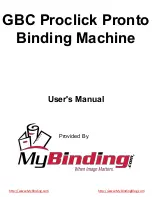
SS300 Service Information (3-2017)
83
SERVICE
4. Press the Battery Type button to select the
battery type installed in machine ().
Fig. 121
BATTERY CHARGER OPERATION
Above is a graph representing the I-U-I (constant
current-constant voltage-contant current) charging
strategy used to charge batteries. For flooded (wet)
lead-acid batteries, the finish voltage can rise up to
approximately 34 Volts (24 Volt System). The fin-
ish phase of the charge cycle causes out gassing
bubbles to mix up the electrolyte and prevent sulpha-
tion build-up in the battery.
NOTE: Flooded (wet) lead-acid batteries outgas dur-
ing a normal charging cycle. Always charge batteries
in a well-ventilated area.
The length of charge time for each phase and overall
charge time varies based on the size of the battery,
size of the charger, and other conditions of the bat-
tery such as discharge level, age of battery, tempera-
ture, etc.
Equalization Charge Cycle
- The equalization
charge cycle automatically occurs once every 30
complete
charge cycles on (wet) lead-acid batteries
only. Charge current increases to higher levels during
the equalization charge to mix layers of electrolyte
that form as a result of repeated charging/discharg-
ing cycles. Maintenance-free batteries can become
damaged from an equalization charge, which is why
it is important to make sure the Tennant-specified
charger is programmed for the battery option used
(see BATTERY CHARGER SETTINGS ON BOARD/
OFF BOARD in the SERVICE section of this manu-
alMaintenance-free batteries, such as AGM and Gel,
use slightly lower finish voltages (approximately 31
Volts) to keep the batteries from outgassing. Water
can not be added to maintenance-free batteries, so
these batteries must be replaced if they are repeat-
edly over charged or the cells are dry due to an
incompatible charger or charger setting.
















































